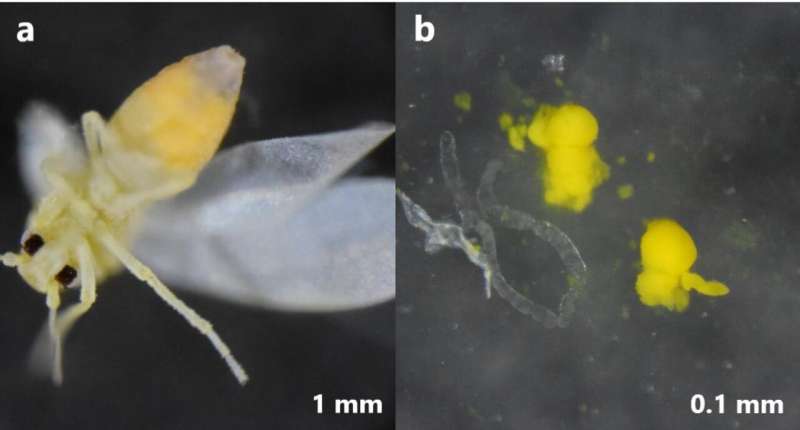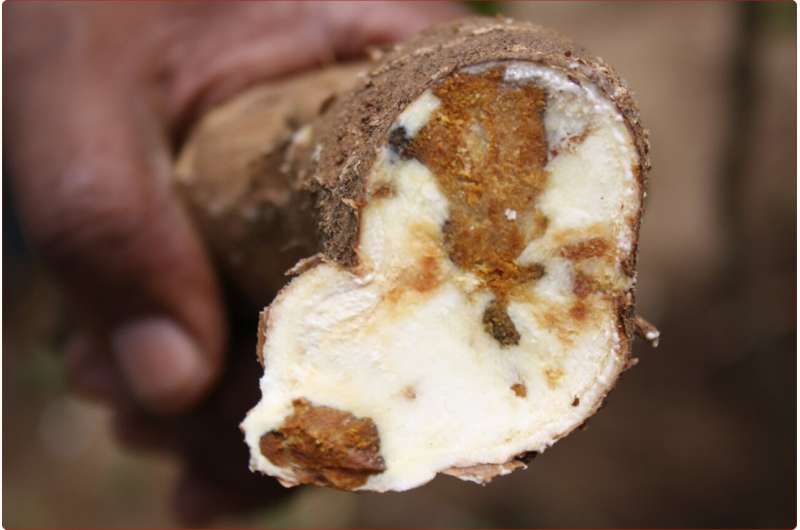This article has been reviewed according to Science X's editorial process and policies. Editors have highlighted the following attributes while ensuring the content's credibility:
fact-checked
peer-reviewed publication
trusted source
proofread
Potential gene targets for managing cassava whitefly, a viral diseases vector threatening food security

Whiteflies, particularly the African cassava whitefly (Bemisia tabaci, SSA1-SG1), pose a significant threat to agricultural productivity in sub-Saharan Africa by transmitting viruses that cause cassava brown streak disease and cassava mosaic virus disease. In a new study published in PeerJ, Dr. Tadeo Kaweesi and his team at the National Agricultural Research Organization identify potential gene targets that could revolutionize the management of this devastating pest and prove vital for food security in the region.
In the article titled "In silico prediction of candidate gene targets for the management of African cassava whitefly (Bemisia tabaci, SSA1-SG1)," the researchers describe utilizing advanced computational methods to pinpoint genes crucial for osmoregulation and symbiosis within the gut and bacteriocytes of the cassava whitefly. By comparing gene expression profiles through RNAseq analysis and conducting phylogenetic and metabolic reconstruction analyses, the team identified seven critical gene targets with enriched expression in the target organs.
The study highlights three osmoregulation genes—AQP1, SUC1, and SUC2—involved in sucrose hydrolysis and water cycling, and four symbiosis genes argH, lysA, BCAT, and dapB—essential for amino acid biosynthesis pathways. These genes play key roles in regulating physiological processes vital for the survival of cassava whiteflies.

The identification of these gene targets opens up new avenues for the development of novel management strategies against cassava whiteflies. By targeting these genes, researchers aim not only to reduce direct feeding damage but also to mitigate the spread of viral diseases, ultimately safeguarding food security for millions in Sub-Saharan Africa.
The next steps involve further evaluation of the impact of targeting these genes, individually or in combination, on the development and survival of B. tabaci. The most effective gene or gene combination will be integrated into transgenic plants for use in comprehensive whitefly management programs in cassava-growing regions.
More information: In silico prediction of candidate gene targets for the management of African cassava whitefly (Bemisia tabaci, SSA1-SG1), a key vector of viruses causing cassava brown streak disease, PeerJ (2024). DOI: 10.7717/peerj.16949
Journal information: PeerJ
Provided by PeerJ




















